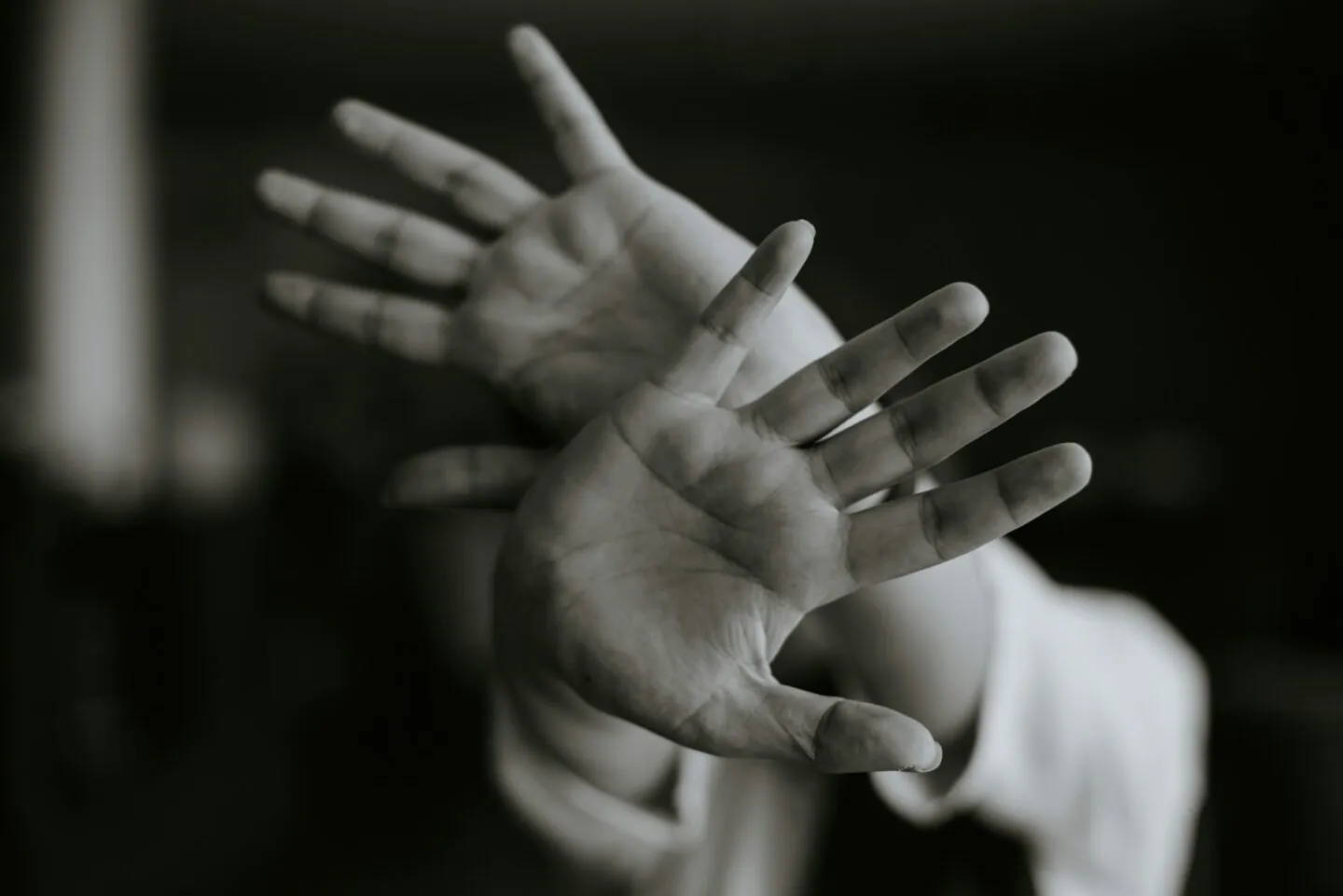EMDR Therapy for Anxiety and Depression: Does it work?
When most people hear about EMDR, they think of it as a treatment for trauma—and they’re not wrong. EMDR (Eye Movement Desensitization and Reprocessing) is a powerful trauma therapy. But what many don’t realize is that EMDR is also incredibly effective for anxiety and depression—especially when those symptoms are linked to past experiences, unprocessed stress, or ongoing emotional overwhelm.
As a therapist who has worked with EMDR for years, I’ve seen how transformational it can be—not just for clients with PTSD, but for people struggling with daily anxiety, panic attacks, low mood, and emotional shutdown. In this blog, I want to share with you exactly how EMDR helps with anxiety and depression, and why it might be the approach that changes everything. EMDR therapy for anxiety and depression could be the missing tool for healing.
Why EMDR Works for More Than Trauma
Let’s start with this: most anxiety and depression don’t just “show up.” They’re often responses to something deeper—early emotional wounds, stressful environments, or unresolved experiences your brain hasn’t fully processed.
When your nervous system holds on to those old emotional patterns, your mind keeps reacting as if the past is still happening. EMDR helps you reprocess those stored experiences so your brain can finally update the message: You’re safe now. You can let go.
That’s why EMDR is so effective for:
- Social anxiety and rejection sensitivity
- Panic attacks linked to past overwhelm
- Perfectionism rooted in childhood pressure
- Depressive symptoms connected to shame or failure
- Anxiety that “comes out of nowhere” but is rooted in history
What EMDR Therapy Actually Looks Like
If you’re new to the idea of EMDR, here’s the gist: it helps your brain process painful or emotionally charged memories using bilateral stimulation or just memory taxation techniques (like guided eye movements, tapping, or sounds).
You remain in control. You’re grounded. And you’re supported every step of the way.
In my sessions, we also use a more modern version called EMDR 2.0, which often gets faster results. It’s been a game changer for many of my clients who were ready to break through their emotional blocks.
In my experience practicing EMDR with clients for the past years I have come to understand the importance of readiness and preparing clients for the trauma work. That’s why I integrate CBT (cognitive behavioral therapy) with EMDR to “prepare” clients for the trauma work while giving them some good coping tool to use through their first weeks of therapy. I have seen people really thrive using this integrated therapy plan. Of course there are some people who can dive straight into trauma work and that’s what we do. My free consultation is the guide for me to get to know each client and tailor the approach to them specifically.
How EMDR Helps with Anxiety
Anxiety often stems from past experiences that made you feel unsafe or out of control—even if you can’t consciously remember them. Maybe you were raised in a high-pressure household, or you were emotionally neglected, or constantly felt like you had to be perfect to be accepted.
Those old emotional memories get stored in your nervous system, and EMDR helps you access and reprocess them. Once the brain understands that those moments are no longer a threat, the anxiety begins to ease.
Here are a few real examples:
- A client with social anxiety realized their fear of speaking up started in 2nd grade when they were publicly shamed. EMDR helped reprocess that memory, and today, they lead meetings at work with confidence.
- Another client had constant health anxiety that traced back to a childhood accident. Through EMDR, we processed that moment, and their panic responses significantly reduced.
How EMDR Supports Depression Healing
Depression can be deeply connected to unresolved pain—especially when your mind has internalized beliefs like “I’m not good enough,” “Nothing ever works out,” or “I’m a burden.”
These beliefs usually don’t come out of nowhere—they come from accumulated experiences that made you feel unsafe, unseen, or not enough. EMDR helps trace those beliefs back to the original source and shift them at the root.
For example:
- A client who grew up with emotionally distant parents carried a deep belief that they weren’t lovable. EMDR helped them reprocess those early memories, and as that shifted, their depressive symptoms lifted.
- Another client dealing with intense guilt and hopelessness from a past breakup used EMDR to shift the stuck grief and shame, allowing joy and motivation to return.

My Approach: Integration and Personalization
What makes therapy most effective isn’t just the technique—it’s how it’s used. I don’t believe in cookie-cutter therapy. Every client brings a unique history, nervous system, and emotional landscape.
That’s why I use a blend of EMDR, Cognitive Behavioral Therapy (CBT), and Sensory Motor Psychotherapy (SMP). Here’s how that integration works:
- EMDR helps process stuck emotional material.
- CBT helps you notice and shift unhelpful thought patterns in daily life. When you live in trauma for years it shapes the way you think about yourself and the world. Let’s help unlearn those unhelpful defense mechanisms and replace/reframe them.
- SMP works with the body to release stored tension and support nervous system regulation. Breathing exercises and movements help connection with your body to be restored which is crucial to healing the overloaded nervous system.
This holistic approach allows us to target both the root and the symptom, creating lasting, meaningful change.
Online EMDR Therapy: Yes, It Works
Many people ask, “Can EMDR actually work online?” The answer is a solid yes. I’ve been doing online therapy for years—initially out of necessity during the pandemic, but now by choice. In fact, the majority of my clients prefer it.
Online EMDR uses tools like visual cues, auditory tones, or even tapping—right from your own space. Many clients feel safer and more relaxed doing EMDR from home, which can actually make the process smoother and more effective.
Is EMDR Right for You?
If you’ve tried talk therapy and still feel stuck… if your anxiety seems irrational but won’t let go… if your depression keeps pulling you down despite your efforts… EMDR might be the missing piece.
You don’t have to relive everything and you don’t have to have a clear memory. You just need to be open to the process and willing to heal.
That’s why I offer a free consultation—so we can explore what you need, where you’re feeling stuck, and whether EMDR is the right next step. EMDR therapy for anxiety and depression is a game changer.

Final Thoughts: Healing Is Possible
You are not your anxiety. You are not your depression. These are signals—your nervous system asking for relief, for resolution, for peace.
EMDR is one of the most powerful tools I’ve ever used to help clients feel lighter, freer, and more grounded in their lives. If you’re ready to explore that possibility, I’d love to walk that path with you. EMDR therapy for anxiety and depression can work even if you don’t clearly remember specific memories. We will find them together as a team.
Reach out today and book your free consultation. Your healing starts now.
Relationship Therapy: How Trauma Affects Relationships
Trauma doesn’t just impact individuals—it deeply influences our relationships. Over the years as a therapist, I’ve seen firsthand how unprocessed trauma can quietly disrupt friendships, romantic relationships, and even family bonds, often without us realizing it. Understanding how trauma affects relationships is a critical first step toward healing and building healthier connections. Relationship therapy can help you re-connect with yourself and others.
What is Trauma?
Trauma isn’t just limited to severe events like accidents or violence. It also includes chronic emotional stress, neglect, and ongoing negative experiences from childhood or adulthood. These experiences shape our brains and bodies in profound ways, influencing how we interact with those around us.
How Trauma Shapes Relationships
When trauma remains unresolved, it can show up in relationships through emotional triggers, reactions, and behaviors. You may not even recognize these responses as trauma-related, but they deeply affect your connections with others.
Here are common ways trauma can influence your relationships:
1. Trust Issues
Trauma often erodes our sense of safety and trust. If you’ve experienced betrayal or abandonment—especially repeatedly—it’s natural to become wary of getting close to people. For example, someone who grew up in a home with inconsistent parental care may struggle to trust friends or partners later in life, constantly fearing they’ll be hurt or left behind.
2. Emotional Dysregulation
Chronic trauma can lead to emotional dysregulation—intense emotional reactions that seem disproportionate to the situation. Small disagreements may escalate rapidly, or you might shut down completely during conflict. For instance, a person who endured constant criticism as a child may become highly defensive or withdrawn during everyday disagreements with a romantic partner, creating emotional distance.
3. Avoidance and Isolation
Trauma can also cause us to avoid intimacy or emotional closeness, even when we deeply crave it. For example, someone who experienced bullying or rejection in childhood may avoid forming close friendships in adulthood, fearing further rejection. This avoidance can lead to isolation and loneliness.
How Trauma Affects Friendships
Friendships require emotional openness and vulnerability. If trauma has taught you to fear vulnerability, you might struggle with creating meaningful friendships. For example, someone who was repeatedly let down by peers in childhood may find themselves regularly canceling plans or avoiding deeper conversations, unknowingly sabotaging potential connections out of self-protection.

Trauma’s Impact on Romantic Relationships
Romantic relationships can be particularly affected by trauma because intimacy requires deep trust and emotional safety. Trauma survivors may unconsciously choose emotionally unavailable partners, repeating familiar patterns from childhood. For example, someone raised by emotionally distant parents may consistently find themselves drawn to partners who cannot meet their emotional needs, perpetuating feelings of rejection or abandonment.
Another common issue in romantic relationships is hypersensitivity to perceived threats. Partners who have experienced trauma might constantly anticipate betrayal, leading to jealousy, suspicion, or frequent arguments, even when there’s no actual cause for concern.
Family Connections and Trauma
Family relationships are profoundly shaped by trauma, often carrying generational patterns of emotional pain. Chronic trauma within a family setting, such as parental addiction, mental health struggles, or emotional neglect, creates complex relational dynamics. Children in these environments might develop caretaker roles at an early age, impacting their ability to form healthy boundaries later in life.
For instance, someone who grew up in a home where emotional or physical needs were ignored might struggle to set boundaries with family members in adulthood, leading to strained relationships and resentment.
How Relationship Therapy Can Help
The good news is trauma doesn’t have to permanently disrupt your relationships. Therapy—especially relationship therapy—can significantly heal trauma’s relational effects. My approach combines EMDR (Eye Movement Desensitization and Reprocessing), Cognitive Behavioral Therapy (CBT), and Sensory Motor Psychotherapy (SMP), providing a tailored strategy that meets your specific relational needs.
Relationship therapy helps by:
- Identifying Patterns: Recognizing how trauma-driven behaviors show up in your relationships.
- Healing Trauma Responses: Using EMDR and SMP to process and release trauma stored in your body and mind.
- Building Healthy Communication: CBT and relational exercises to enhance emotional regulation and communication skills.
- Creating Safe Connections: Learning to trust again and fostering emotional intimacy safely.

The First Step: Free Consultation
Understanding your trauma and how it affects your relationships can feel overwhelming, but you don’t have to navigate this alone. I offer a free consultation to discuss your unique situation and determine the best therapeutic approach. Therapy is always personalized, safe, and supportive, ensuring you feel comfortable every step of the way.
If you’re ready to address the trauma that’s affecting your relationships, reach out today. Healing and healthier connections are within your reach.
Anxiety and Depression Therapy: The Best Approach for You?
When someone reaches out for help with anxiety or depression, one of the first questions they often ask is, “What’s the best therapy approach for me?” And my answer is always the same: it depends on you. There is no one-size-fits-all when it comes to therapy—because every person carries a unique story, a different nervous system, and their own way of processing the world around them.
As a therapist, I’ve spent years helping people work through anxiety and depression, and I’ve learned that the most effective approach is one that’s tailored to the individual. Whether you’re struggling with constant worry, low motivation, panic attacks, or a deep sense of hopelessness, there’s a path forward—and it starts with finding the approach that fits you. Anxiety and depression therapy doesn’t have to confuse you.
Why One Approach Doesn’t Fit All
Therapy isn’t just about applying techniques—it’s about creating a relationship and process that feels safe and effective for the person sitting across from me. Anxiety and depression don’t show up the same way for everyone. Some people feel it in their bodies—tightness in the chest, racing heart, constant fatigue. Others feel it in their thoughts—overanalyzing everything, spiraling into worst-case scenarios, or feeling numb and disconnected from life.
That’s why I draw from an integrated approach, combining methods like:
Cognitive Behavioral Therapy (CBT) – to identify and challenge negative thought patterns.
Eye Movement Desensitization and Reprocessing (EMDR) – to process trauma and stuck emotional responses.
Sensory Motor Psychotherapy (SMP) – to connect with the body and release trauma stored in the nervous system.
The goal isn’t to “treat a symptom.” The goal is to understand the root of your anxiety and depression, and help you heal from the inside out.
How My Early Work Shaped My Approach
Earlier in my career, I worked with war veterans who were struggling with intense anxiety, depression, and emotional shutdown. Many of them didn’t even identify their experiences as trauma—they just knew they didn’t feel safe, couldn’t sleep, and couldn’t connect with people anymore. It became clear to me that unprocessed trauma was living beneath the surface of their symptoms.
I also spent time working with adults on probation, and I noticed something similar. Many of the people I worked with had experienced neglect, abuse, or violence early in life. They were functioning adults, but underneath the surface were layers of unresolved trauma that showed up as depression, anxiety, anger, or self-sabotaging behaviors.
These experiences taught me something important: we can’t talk our way out of trauma.
That’s when I knew I needed deeper, more drastic tools—like EMDR—to help people not just cope, but truly heal.
The Role of EMDR in Healing Anxiety and Depression
EMDR (Eye Movement Desensitization and Reprocessing) is one of the most powerful tools I use with clients who are ready to process and release the emotional weight they’ve been carrying. What makes EMDR so effective is that it doesn’t rely on talking alone. It helps the brain reprocess memories that are stuck in the nervous system and allows the body to finally feel safe again.
Many clients come to me after trying traditional therapy and feeling like they’re just going in circles. They know what their issues are—they’ve talked about them—but they still feel stuck. EMDR often helps them break through those stuck points in ways they didn’t think were possible.
And yes—EMDR works beautifully online too, it keeps evolving how therapists practice it online and how we apply stimulation to the short-term memory that is key to healing.

Combining Tools for Lasting Change
Sometimes, clients need structure and practical strategies. That’s where CBT is helpful—we work on identifying distorted thinking, reframing unhelpful beliefs, and building better coping tools. Other times, anxiety and depression live in the body, and no amount of thinking changes that. That’s where SMP helps, by bringing attention to somatic cues, breath, posture, and tension that hold emotional pain.
In many cases, I use all three approaches—CBT, EMDR, and SMP—depending on where the client is in their healing journey. My role is to meet each person exactly where they are, without forcing a method or rushing the process.
How Do You Know What You Need?
That’s where our free consultation comes in. Before starting therapy, I offer a consultation to get to know you—what you’ve been going through, what you’ve tried before, and what feels most difficult right now. This conversation helps me understand the best way to approach your therapy.
Sometimes, we start slow and focus on stabilizing anxiety with body-based tools and CBT techniques. Other times, we move more directly into trauma processing with EMDR. The key is that we figure it out together, and you never have to do it alone.
What You Can Expect from Our Work Together
If you’re struggling with anxiety and depression, you might feel like it’s always going to be this way. But I want you to know: healing is absolutely possible. I’ve seen it happen over and over again—clients who once felt stuck, disconnected, or overwhelmed begin to experience relief, clarity, and connection again.
In our work together, you can expect:
A safe, non-judgmental space to explore what’s really going on.
A therapy plan tailored to your specific needs, not a generic protocol.
Tools and strategies to manage anxiety and low mood day-to-day.
Deeper healing work to resolve the root causes, not just surface symptoms.
Flexibility—sessions are done online for your convenience.

Ready to Take the First Step?
You don’t have to keep carrying this alone. Whether your anxiety feels like a constant hum in the background or your depression feels like it’s pulling you under, there is a way forward. Through a personalized, integrated therapy approach, we can work together to understand what’s going on and help you move toward healing. Anxiety and depression therapy is really effective.
If you’re curious about starting therapy, I invite you to book a free consultation. It’s a chance for us to talk, explore your needs, and see if my approach is the right fit for you.
Because the best therapy isn’t just about techniques—it’s about finding the right approach for you.
Anxiety and Depression Therapy: Does Online Therapy Work?
Online therapy has completely changed the way people get help for anxiety and depression. Over the past six years of working with clients online, I’ve seen just how powerful virtual therapy can be. But if you’re wondering, does online therapy really work for anxiety and depression? The short answer is yes—and for many people, it’s actually more effective than in-person therapy. I was very sceptical about it at first but when Covid hit us we had to find a way to support people even from a distance. That was the time I remember I was seeing about 50 people weekly (most of them nurses, doctors and first responders) and I had to let them know how to use the online platform and at the same time I was being re-trained on the modalities I use (EMDR, CBT, SMP) to practice online. The thing that convinced me about the effectiveness of online therapy personally is that when we re-opened our offices and I let my clients know that they can come back in person if they wish, only 4 came back to the office. The others continued online which tells me a lot about how great online therapy is.
Let’s break it down: how online therapy works, why it’s effective, and when it might not be the best fit.
How Online Therapy Works for Anxiety and Depression
Online therapy follows the same principles as traditional therapy, but instead of sitting in an office, you meet with your therapist via video call, phone call, or even chat-based platforms. Sessions are structured just like in-person therapy, and you can access evidence-based treatments such as:
- Cognitive Behavioral Therapy (CBT) – Identifying and challenging negative thought patterns.
- Eye Movement Desensitization and Reprocessing (EMDR) – Processing trauma that contributes to anxiety and depression. (Check the article: Overcoming Driving Anxiety with EMDR Therapy)
- Mindfulness-Based Therapy – Helping you stay present and reduce overwhelming thoughts.
- Sensory Motor Psychotherapy (SMP) – Addressing how trauma and anxiety affect the body.
The best part? You can do all of this from the comfort of your own home. This makes therapy more accessible, flexible, and easier to fit into daily life.
- EMDR Therapy for Anxiety and Depression: Does it work?
- Relationship Therapy: How Trauma Affects Relationships
- Anxiety and Depression Therapy: The Best Approach for You?
- Online Therapy: My Take as a Therapist
- Marriage and Relationship Counseling: What’s the Difference?
Is Online Therapy Effective? What the Research Says
Yes! Studies show that online therapy is just as effective as in-person therapy for treating anxiety and depression. Research has found that:
- CBT delivered online is equally effective in reducing symptoms of anxiety and depression compared to in-person CBT.
- Online EMDR therapy helps people process trauma and decrease anxiety levels.
- Therapy accessibility increases commitment—people are more likely to stick with sessions when they can do them online.
I’ve personally seen clients go from crippling anxiety to confidence, and from depressive episodes to feeling like themselves again—all through virtual therapy.
Why Online Therapy Works for Anxiety and Depression
1. Comfort & Convenience 
For many, the biggest barrier to therapy is simply getting to the session. Online therapy removes this issue:
- No commuting or waiting rooms.
- Clients feel more relaxed in their own space, making it easier to open up.
- Perfect for people with social anxiety or depression-related fatigue who struggle with leaving the house.
2. More Consistency = Better Results 
- When therapy is convenient, people are less likely to miss sessions.
- Regular attendance means faster progress and better mental health outcomes.
- Flexibility in scheduling helps therapy fit into busy or unpredictable lifestyles.
3. Privacy & Anonymity 
Some people avoid therapy due to stigma or fear of being seen in a waiting room. Online therapy offers:
- 100% privacy, as you can attend from anywhere.
- Less anxiety about seeing someone you know.
- Greater comfort discussing sensitive topics.
4. Effective Therapeutic Techniques Still Work 
Many therapy techniques work just as well online, including:
- CBT exercises (identifying & restructuring thoughts)
- EMDR (bilateral stimulation can be done remotely)
- Mindfulness & relaxation techniques
- Somatic work for trauma-related anxiety
The key is having a skilled therapist who knows how to adapt these tools to an online setting.

When Online Therapy Might Not Be the Best Option
While online therapy is effective for most people, there are some situations where in-person therapy might be a better choice:
1. Severe Mental Health Crises 
- If someone is actively suicidal or in immediate danger, in-person support is better.
- Online therapy doesn’t provide emergency intervention.
- In these cases, crisis services or in-person psychiatric care may be necessary.
2. Limited Privacy at Home 
- If you live with others and can’t find a private space, it might be harder to open up.
- Solutions: Use headphones, go to a quiet room, or even sit in your car for the session.
3. Difficulty Connecting Through a Screen 
- Some people prefer face-to-face interactions and find it easier to build trust in person.
- However, most clients adapt quickly and find virtual therapy just as engaging.
How to Make Online Therapy Work for You
If you’re considering online therapy, here’s how to get the most out of it:
1. Set Up a Private, Comfortable Space 
- Find a quiet, distraction-free area for your sessions.
- Use headphones for better focus and privacy.
2. Treat It Like an In-Person Session 
- Show up on time, free from distractions (no multitasking!).
- Keep a journal for notes and insights between sessions.
3. Be Open & Committed 
- Therapy works when you engage—be honest and open with your therapist.
- Practice the techniques and do the “homework” outside of sessions.
4. Choose the Right Therapist 
- Find a therapist who specializes in anxiety and depression.
- Look for experience in CBT, EMDR, or trauma therapy.
- Read reviews or schedule a consultation to see if they’re the right fit.
Final Thoughts: Is Online Therapy Worth It?
Absolutely. Online therapy is an effective, accessible, and flexible option for treating anxiety and depression. It works because it removes common barriers, distance, scheduling issues while still delivering the same high-quality care as in-person therapy. I have seen it work so many times in my career so far that I’m convinced by now.
I’ve seen clients rebuild their confidence, work with to heal trauma, break free from anxious thoughts, and overcome depression, all through virtual therapy. If you’re struggling, know that help is available and it can work for you too.
Thinking about trying online therapy? Take the first step today, contact me here for a free consultation.
Managing Anxiety with Online Therapy: What to Expect
Over the past six years, I’ve guided many clients through online therapy, and I’ve seen firsthand how powerful and effective it can be in managing anxiety. When people first hear about online therapy, they often wonder: Does it really work? Can therapy over a screen be as impactful as in-person sessions? The answer is a resounding yes.
I want to walk you through what to expect in online therapy, how cognitive distortions and Cognitive Behavioral Therapy (CBT) play a role in anxiety, and how deeper trauma-based anxiety can be effectively treated through EMDR and SMP therapy—even in a virtual setting. Anxiety treatments are out there and sometimes people are confused with that to “go” for. I am trained in different modalities and I use them as weapons to fight anxiety uniquely in each client that comes my way. For me it’s important to get to know YOU in depth so I can modify the treatment plan on you and fight anxiety properly. Managing anxiety with online therapy can work wonders. Let’s dive in.
The Effectiveness of Online Therapy
There’s a common misconception that therapy needs to happen in person to be effective. But research consistently shows that online therapy is just as powerful as in-person sessions for treating anxiety and other mental health conditions.
In fact, many of my clients find online therapy even more convenient and comfortable. Being in your own space can make it easier to open up, and removing the hassle of commuting means people are more consistent with their sessions—which, in turn, leads to better results.
Over the years, I’ve seen clients go from being completely overwhelmed by their anxiety to regaining control and confidence—all through virtual therapy. It’s about using the right techniques and creating a space where healing can happen, regardless of physical location.
Cognitive Distortions & CBT: Reshaping Anxious Thoughts
Anxiety often thrives on cognitive distortions—irrational and exaggerated thought patterns that fuel worry and fear. These distortions can make small stressors feel like massive threats. Some common ones include:
- Catastrophizing – Expecting the worst-case scenario in every situation.
- Black-and-white thinking – Seeing things as either all good or all bad, with no in-between.
- Mind reading – Assuming you know what others are thinking (usually assuming the worst!).
- Overgeneralization – Believing that one negative event means everything will always go wrong.
This is where Cognitive Behavioral Therapy (CBT) comes in. CBT is all about identifying, challenging, and reframing these unhelpful thought patterns. In online sessions, I guide clients through exercises that help them recognize when anxiety is taking over and give them practical tools to shift their mindset.
For example, if a client struggles with catastrophizing, we work on evidence-based thinking—asking questions like: What’s the actual likelihood of this worst-case scenario happening? Has this happened before? What are the facts vs. my fears?
Through online therapy, we use interactive worksheets, guided journaling, and real-time exercises to help rewire anxious thought patterns. These strategies are just as effective virtually as they are in person—because real change happens in how we think, not where we are.

Anxiety from Trauma: How EMDR & SMP Therapy Help
For many people, anxiety isn’t just about stressful thoughts—it’s rooted in past trauma. This can be anything from childhood experiences to more recent events that left a deep imprint on the nervous system. Trauma-based anxiety isn’t just about worrying; it’s about the body feeling unsafe, even when there’s no immediate threat.
This is where Eye Movement Desensitization and Reprocessing (EMDR) and Sensory Motor Psychotherapy (SMP) become essential tools.
EMDR Therapy Online: Reprocessing Trauma from Anywhere
EMDR is a highly effective therapy for trauma and anxiety. It helps the brain reprocess distressing memories so they no longer feel like a constant threat. Many people are surprised to learn that EMDR works just as well online as it does in person.
In a virtual EMDR session, I guide clients through bilateral stimulation, using eye movements or tapping exercises to help the brain process stuck memories. There are excellent digital tools that allow for smooth and effective EMDR processing—all from the comfort of home.
For many clients, online EMDR has been a game-changer in breaking free from old fears and emotional triggers.
SMP Therapy: Healing Anxiety in the Body
Sensory Motor Psychotherapy (SMP) focuses on the body’s response to trauma and anxiety. Sometimes, anxious thoughts aren’t just in the mind—they manifest physically as tension, restlessness, stomach issues, or even panic attacks.
In online SMP sessions, I guide clients through mindful body awareness, movement techniques, and breathwork to help release stored tension and restore a sense of safety. This approach is especially helpful for those who feel “stuck” in their anxiety, no matter how much they try to think their way out of it.
What to Expect from Online Therapy
If you’re considering online therapy for anxiety, here’s what you can expect:
- A structured but flexible approach – We tailor sessions to what works best for you, whether it’s CBT, EMDR, SMP, or a combination.
- Interactive tools & exercises – We use digital worksheets, guided exercises, and journaling prompts to support your progress.
- Privacy & convenience – No commuting, no waiting rooms—just a safe space where you can focus on healing.
- Real, lasting change – Anxiety doesn’t go away overnight, but with consistent work, you’ll notice shifts in how you think, feel, and react.

Final Thoughts
Online therapy isn’t just a backup option—it’s a powerful, effective way to manage anxiety and heal from past trauma. Whether we’re tackling anxious thought patterns through CBT, reprocessing trauma with EMDR, or working through physical responses to anxiety with SMP, the results are real and life-changing.
After six years of working with clients virtually, I’ve seen countless people move from constant overwhelm to feeling in control of their lives again.
Anxiety doesn’t have to rule your life. If you’re ready to take the next step, online therapy might be exactly what you need.
Interested in learning more? Reach out through my website or schedule a free consultation to see how online therapy can work for you. Managing anxiety with online therapy might be what you need.
Why I Choose EMDR: A Therapist’s Perspective
As a therapist, I’ve had the privilege of working with a wide range of clients—adults on probation, war veterans, individuals carrying deep-seated childhood trauma. Through this work, I’ve seen firsthand what works and what doesn’t in trauma therapy.
I began my career with classic talk therapy techniques, using CBT (Cognitive Behavioral Therapy) and mindfulness-based approaches to help clients manage symptoms. These are valuable tools, but when it came to PTSD and deep trauma processing, I saw clear limitations.
The Limitations of Talk Therapy for PTSD
For individuals with PTSD, talking about trauma often isn’t enough. The mind and body store trauma in a way that talking doesn’t always reach. Many of my clients, particularly war veterans and those with complex trauma histories, would gain intellectual insight into their struggles but remain stuck in the same emotional and physiological responses.
They would say things like:
- “I understand why I react this way, but I still can’t stop.”
- “I know it’s irrational, but my body goes into panic mode.”
- “I’ve talked about it for years, but the nightmares and flashbacks won’t go away.”
That’s when I realized that understanding trauma cognitively isn’t the same as processing it emotionally and somatically. This gap led me to Eye Movement Desensitization and Reprocessing (EMDR).
Why EMDR?
It is unlike anything else in trauma therapy. It targets the root of trauma—not just the conscious thoughts, but the deep, stored emotional and physiological reactions tied to distressing experiences. It desensitizes and reprocesses traumatic memories, so the brain no longer reacts as if the danger is happening in real time.

What makes EMDR powerful?



Integrating EMDR with Other Methods
I don’t just use EMDR in isolation. Over the years, I’ve developed a comprehensive approach, combining EMDR with:



Each of these approaches plays a role, but EMDR is often the missing link that allows clients to move from awareness to actual healing.
Working with Adults on Probation & War Veterans
Some of my most eye-opening experiences with EMDR have been with adults on probation and war veterans. These clients often come to therapy feeling trapped by their trauma responses—hypervigilance, panic attacks, dissociation, or intense anger.
- Probation Clients: Many individuals I’ve worked with have experienced generational trauma, abuse, and systemic oppression. For them, EMDR provides a way to process past experiences without retraumatization, allowing them to build healthier responses rather than repeating past cycles.
- War Veterans: The brain of a veteran with PTSD is wired for survival mode. With EMDR, we systematically reduce the emotional charge around combat memories, intrusive thoughts, and hyper-reactivity, allowing the nervous system to recalibrate.
Beyond Trauma: EMDR for Anxiety, Phobias & Self-Worth
While EMDR is best known for trauma, I also use it for anxiety disorders, phobias, and self-esteem work. Many of our patterns of fear, doubt, or avoidance stem from implicit memories. EMDR helps clients unhook from past conditioning and create new, healthier mental pathways.

Final Thoughts: EMDR as a Game-Changer
As a therapist, I choose EMDR because I see it work. It transforms lives in a way that many traditional methods struggle to achieve alone. When combined with other therapeutic modalities, it provides a holistic, deep-reaching way to heal. In my experience being in the therapy room with hundreds of clients in my career I’ve come to realize that there is no one size-fits all approach. Everyone is in a different phase and “readiness” to process their trauma and that should always be respected and accounted for from any therapist. That being said, combining different modalities is what has enabled me to see the true potential of eye movement reprocessing.
If you’ve tried therapy before but still feel stuck, EMDR might be the missing piece. If you’re ready to explore this approach, visit www.Dimitriostherapy.com and book a consultation.
Healing is possible, and EMDR is a powerful path forward.
Why Anxiety Feels Worse at Night – And How to Handle It
It’s late. The world is quiet. You’re lying in bed, exhausted but wide awake, heart racing, thoughts spiraling. Sound familiar? If you struggle with anxiety, you’ve probably noticed that it feels worse at night. But why does this happen? And more importantly, what can you do about it? Let’s break it down.
Why Anxiety Peaks at Night
1. No Distractions = More Overthinking
During the day, your brain is occupied—work, errands, social interactions, screens. But at night, all of that fades away, leaving space for anxious thoughts to creep in. Without distractions, your brain starts reviewing everything that went wrong, everything that could go wrong, and everything in between.
2. Your Brain is Exhausted
Think about how you feel at the end of a long day—drained, mentally tired, sometimes irritable. Your brain has been processing all day, and now it’s running on empty. When you’re exhausted, it’s harder to regulate emotions, making anxiety feel stronger and harder to control.
3. Cortisol Levels and the Stress Response
Cortisol, the stress hormone, naturally fluctuates throughout the day. At night, levels drop, but if you’ve been stressed, your body might overcompensate by producing more, keeping you alert when you should be winding down. This can trigger a cycle of restlessness and anxiety.
4. Fear of Insomnia Makes It Worse
Ever found yourself thinking, “I need to sleep, or tomorrow will be a disaster”? This pressure makes sleep even harder to achieve. The more you stress about not sleeping, the more awake and anxious you feel.
How to Calm Anxiety at Night
The good news? You can break the cycle. Here are some practical ways to ease nighttime anxiety and get better sleep.
1. Create a Wind-Down Routine
Your brain needs time to transition from on to off. Try these steps an hour before bed:
- Dim the lights.
- Avoid screens (yes, that includes doom-scrolling).
- Read something light or journal your thoughts.
- Take a warm shower or do some light stretching.
2. Use Breathing Techniques
Anxiety speeds up your breathing, which tells your body you’re in danger. Slow, controlled breathing signals safety. Try the 4-7-8 technique:
- Inhale for 4 seconds.
- Hold for 7 seconds.
- Exhale slowly for 8 seconds.
- Repeat until you feel calmer.
3. Challenge Your Thoughts
If your brain is throwing worst-case scenarios at you, challenge them:
- “Is this thought 100% true?”
- “What’s a more realistic way to look at this?”
- “Will this matter a year from now?”
Reframing anxious thoughts can help stop the spiral before it takes over.
4. Try Progressive Muscle Relaxation (PMR)
Anxiety makes your body tense. PMR helps by tensing and relaxing different muscle groups. Start with your toes, work your way up, and feel the tension release.
5. Use White Noise or Meditation Apps
Silence can be deafening when you’re anxious. Try:
- White noise or nature sounds.
- Guided meditation (apps like Calm or Headspace work wonders).
- Soft music to create a sense of safety and comfort.
6. Get Out of Bed If You Can’t Sleep
Lying there, staring at the ceiling, will only make it worse. If you can’t sleep after 20 minutes, get up, do something calming (read, stretch, listen to soft music), then try again. The goal is to associate your bed with rest, not stress.
7. Limit Caffeine and Heavy Meals Before Bed
Caffeine can stay in your system for up to 6 hours, keeping your nervous system on high alert. Eating heavy meals late can also disrupt sleep. Try to stop caffeine after 2 PM and keep late-night snacks light.
Final Thoughts
If nighttime anxiety is a regular struggle, know this—you’re not alone, and it doesn’t have to control your nights. By understanding why it happens and using simple strategies to calm your mind and body, you can create a more peaceful nighttime experience.
Try out a few of these techniques and see what works best for you. And remember, anxiety thrives on fear—but you don’t have to let it win.
Anxiety and Dating: How to Navigate Love Without Overthinking Everything
Dating can be exciting, nerve-wracking, and even downright terrifying—especially when anxiety gets involved. If you’ve ever found yourself overanalyzing a text, replaying conversations in your head, or worrying if you “said the wrong thing,” you’re not alone. Anxiety and dating often go hand in hand, but the good news is, it doesn’t have to control your experience. Let’s break it down and talk about how to navigate dating while managing anxiety in a healthy way.
Why Does Dating Trigger Anxiety?
Dating puts us in a vulnerable position. You’re meeting new people, stepping outside your comfort zone, and, let’s be honest, hoping for connection. Anxiety thrives in uncertainty, and dating is full of it. Here’s why it can feel so overwhelming:





Sound familiar? The key isn’t to eliminate these thoughts completely (that’s impossible), but rather to manage them in a way that doesn’t sabotage your dating experience.
How Anxiety Affects Your Dating Life
Anxiety isn’t just a mental struggle—it shows up in real ways that can impact how you connect with people. Here are some common ways anxiety plays a role in dating:





If any of this resonates, don’t worry—it doesn’t mean you’re bad at dating. It just means your nervous system is wired to protect you. But connection requires risk, and learning to manage your anxiety can help you step into dating with more confidence.
How to Navigate Dating with Anxiety
1. Challenge the Fear of Rejection
Rejection isn’t a reflection of your worth—it’s just a mismatch. Instead of personalizing it, try reframing it:
“They didn’t like me, something must be wrong with me.”
“We just weren’t the right fit, and that’s okay.”
Not everyone is meant to connect deeply, and that’s normal. The right person won’t make you feel like you have to constantly prove your value.
2. Stop Overthinking Texts & Interactions
Texting anxiety is real. If you find yourself obsessing over response times or analyzing every emoji, remind yourself: 


Try setting a rule: If you wouldn’t worry about it with a friend, don’t overthink it with a date.
3. Regulate Your Nervous System Before & After Dates
Since anxiety is often a body response, managing it physically can help: 


4. Set Boundaries & Honor Your Own Needs
It’s easy to fall into the trap of prioritizing someone else’s needs over your own, especially if you have anxiety. But dating should feel mutual, not one-sided.



5. Remember: Dating Is a Process, Not a Performance
You don’t have to be “perfect” to be loved. The right person will appreciate you for who you are, anxieties and all.



Dating with anxiety is challenging, but it’s possible to show up as your authentic self and build meaningful connections. Take it one step at a time, breathe through the discomfort, and remind yourself: you are enough, exactly as you are.
Final Thoughts
Dating isn’t about eliminating anxiety—it’s about learning how to navigate it in a way that allows you to connect without fear running the show. If you struggle with dating anxiety, what’s one thing that helps you stay grounded? Let’s talk in the comments.
Trauma and Anxiety: How Unprocessed Trauma Fuels Triggers and Chronic Anxiety
Anxiety doesn’t just come out of nowhere. If you struggle with chronic anxiety, panic attacks, or intense emotional reactions, chances are unprocessed trauma is playing a role. Trauma isn’t just about major life-threatening events—it can come from childhood wounds, toxic relationships, or even small moments where you felt unsafe but never had the chance to process it. And when trauma stays unresolved, it lives in the nervous system—fueling anxiety, overreactions, and constant feelings of unease.
If you’ve ever felt triggered and thought, Why am I reacting so intensely to this?, this article is for you. Let’s explore the link between trauma and anxiety, how triggers work, and what you can do to start healing.
The Connection Between Trauma & Anxiety
Trauma and anxiety are deeply connected because trauma rewires the brain to stay in a state of hypervigilance. When you go through something overwhelming—whether it’s a breakup, childhood neglect, or a major loss—your nervous system learns to associate safety with danger. This creates long-term patterns of anxiety.



This is why trauma-based anxiety can feel irrational. You know you’re safe, but your body doesn’t believe it.
What Are Triggers and How Do They Work?
Triggers are sensory reminders of past trauma that activate a strong emotional reaction. They can be:



When a trigger activates, your brain reacts as if the past trauma is happening right now, flooding your body with anxiety, panic, or dissociation. This is why people with unresolved trauma often struggle with chronic anxiety and emotional reactivity.
How Unprocessed Trauma Fuels Chronic Anxiety
If you feel like your anxiety is always there, lurking in the background, it might be because your nervous system is stuck in survival mode. Here’s how:





The cycle of trauma and anxiety can feel endless, but there are ways to retrain your brain and body to feel safe again.
Healing Trauma-Based Anxiety: Where to Start
Breaking free from trauma-fueled anxiety requires teaching your nervous system that the present is safe. Here’s how:
1. Learn to Recognize Your Triggers
Start noticing what sets off your anxiety. Ask yourself:
- What happened right before I started feeling anxious?
- Is this reaction about the present or something from my past?
- What does my body need to feel safe again?
Naming your triggers helps separate past trauma from current reality.
2. Grounding Techniques to Bring You Back to the Present
When anxiety kicks in, use grounding exercises to remind your body that you’re safe.



3. Somatic Work: Releasing Trauma from the Body
Trauma isn’t just stored in the mind—it’s stored in the body. Releasing it means engaging in physical practices that reset the nervous system:



4. Reframe Your Thoughts & Inner Dialogue
Anxiety often comes with negative self-talk, like: 


Instead, challenge these thoughts: 


Your brain believes what you tell it—so feed it thoughts that help, not thoughts that harm.
When to Seek Professional Help
If trauma-based anxiety is affecting your daily life, therapy can help. Therapies like EMDR, CBT, and somatic therapy are designed to help process unresolved trauma, rewire the nervous system, and break free from triggers.
There’s no shame in getting help—healing is a strength.
Final Thoughts: You Are Not Your Trauma
Anxiety and trauma don’t define you. They are responses your body has learned—but they can also be unlearned. Healing doesn’t mean forgetting the past, but it does mean learning how to feel safe in the present.
You deserve peace. You deserve freedom from anxiety. And with the right tools and support, you can get there.
Co-Dependency and Anxiety: Breaking the Cycle of Emotional Overload
Co-dependency and anxiety often go hand in hand. If you constantly feel responsible for other people’s emotions, struggle to set boundaries, or feel anxious when someone is upset with you, you might be caught in the cycle of co-dependency. It’s exhausting, overwhelming, and leaves you feeling like you’re never truly at peace.
The good news? You’re not alone, and you can break free from this cycle. Let’s explore the connection between co-dependency and anxiety, how to recognize it in yourself, and what you can do to start healing.
What Is Co-Dependency?
Co-dependency is an emotional and behavioral pattern where your sense of self-worth depends on others. You might feel like you need to be needed to feel valuable. This often leads to over-giving, people-pleasing, and feeling responsible for other people’s happiness.
Signs of co-dependency include: 





Sound familiar? If so, you’re not alone—and it’s not your fault. Co-dependency often develops from childhood experiences, relationships with emotionally unavailable caregivers, or being placed in a caretaker role too early in life.
How Co-Dependency Triggers Anxiety
When your emotional well-being depends on others, anxiety becomes a constant presence.




This creates a never-ending loop where anxiety fuels co-dependency, and co-dependency fuels anxiety. But the cycle can be broken.
How to Break Free from Co-Dependency & Anxiety
Healing co-dependency starts with learning to put yourself first without guilt. Here’s how:
1. Recognize & Challenge Your Thought Patterns
Co-dependent anxiety makes you believe: 


Challenge these beliefs. Ask yourself: 


Reframing these thoughts is the first step toward breaking the cycle.
2. Set Boundaries (Without the Guilt)
If the idea of saying “no” makes you anxious, start small:
- Delay your response: “Let me think about it and get back to you.”
- Use “I” statements: “I can’t take that on right now, but I appreciate you asking.”
- Start with low-risk boundaries before tackling bigger ones.
Boundaries protect your energy. You are not responsible for managing everyone else’s emotions.
3. Detach with Love (Not Guilt)
You can love and care for people without taking on their burdens. This means: 


It’s okay to care deeply, but not at the cost of your own emotional well-being.
4. Reconnect with Your Own Needs & Identity
Co-dependency makes you lose touch with yourself. Start asking:
- What do I want?
- What makes me happy?
- What do I need today?
Start small—maybe it’s a quiet moment alone, journaling, or pursuing a hobby. The more you honor your needs, the less anxiety will control you.
5. Regulate Your Nervous System
Since anxiety and co-dependency keep your nervous system on high alert, calming techniques help retrain your brain to feel safe.




The more you practice self-regulation, the easier it gets to step out of co-dependent patterns without fear.
When to Seek Professional Help
Breaking free from co-dependency and anxiety is possible—but it’s not always easy to do alone. Therapy can help you: 



Healing takes time, but every step you take toward breaking this cycle creates more space for self-love, peace, and emotional freedom.
Final Thoughts: You Are Enough
You are not here to manage other people’s emotions. You are not responsible for keeping everyone else happy at your own expense. Your needs, your voice, and your well-being matter just as much as anyone else’s.
Healing from co-dependency and anxiety means learning to let go of guilt, trust yourself, and step into a life where you feel safe, balanced, and whole—without needing external validation.

